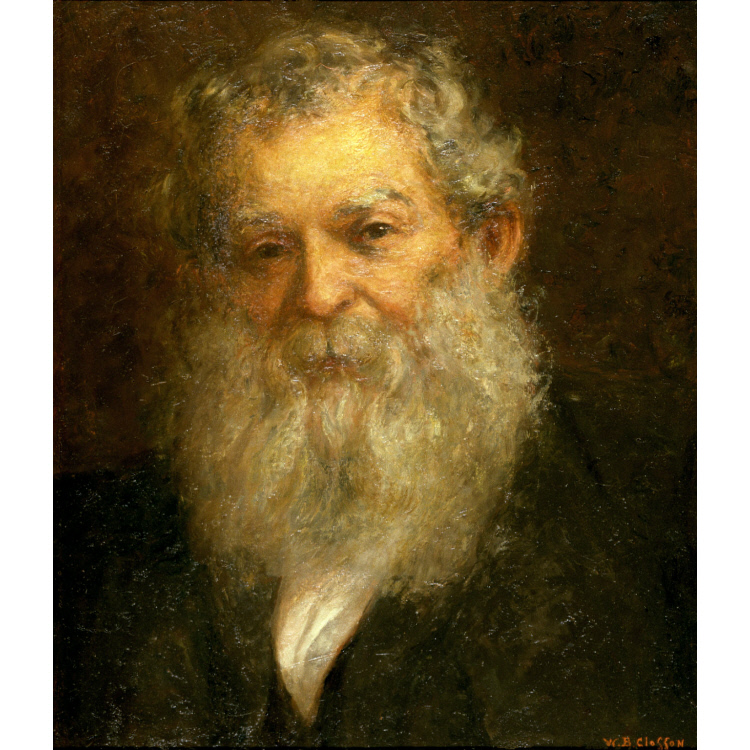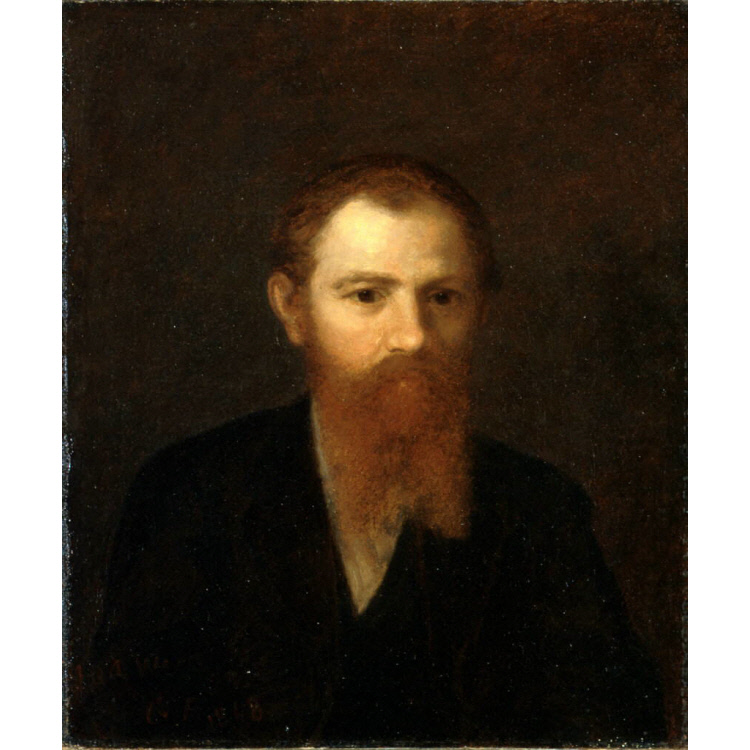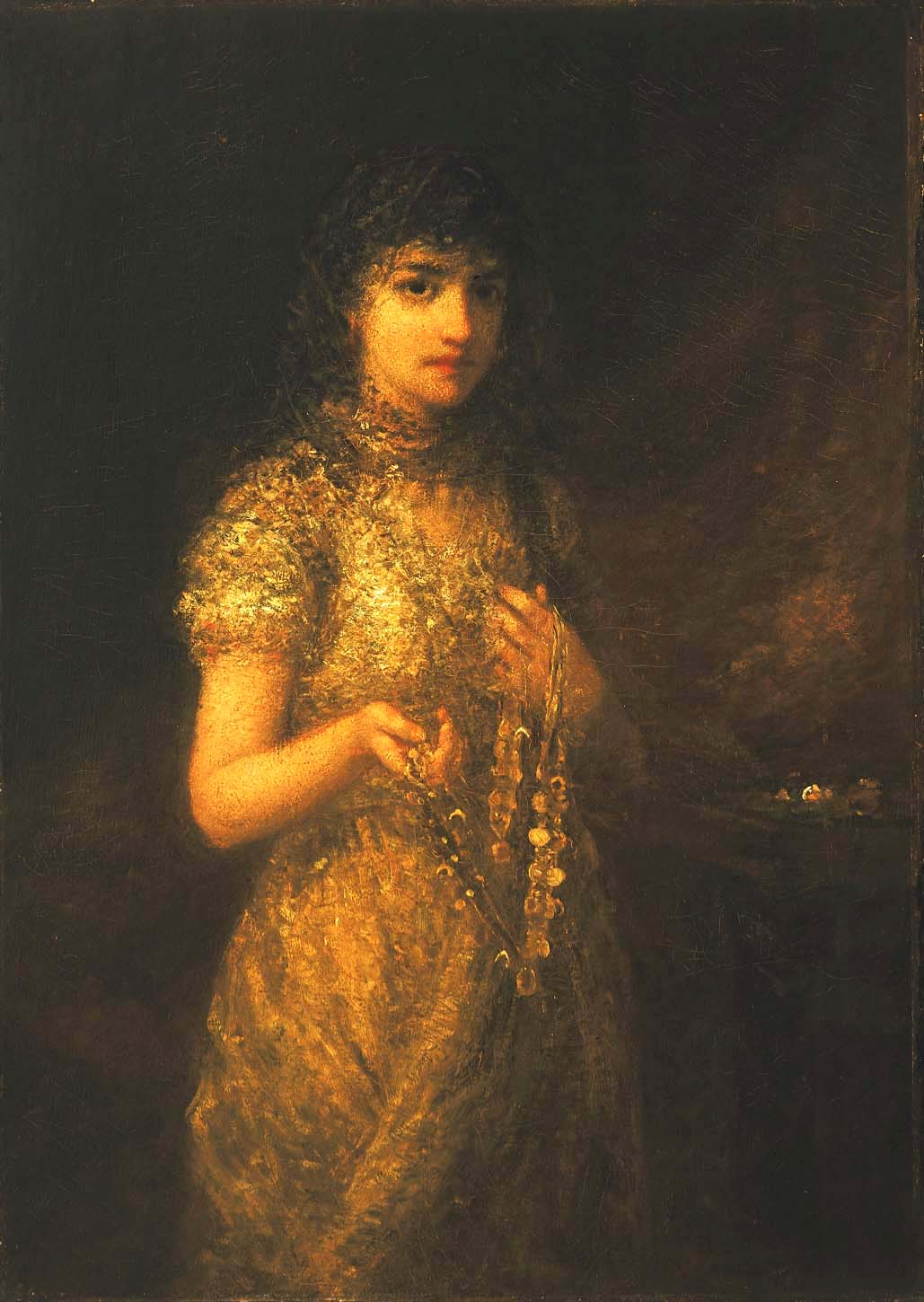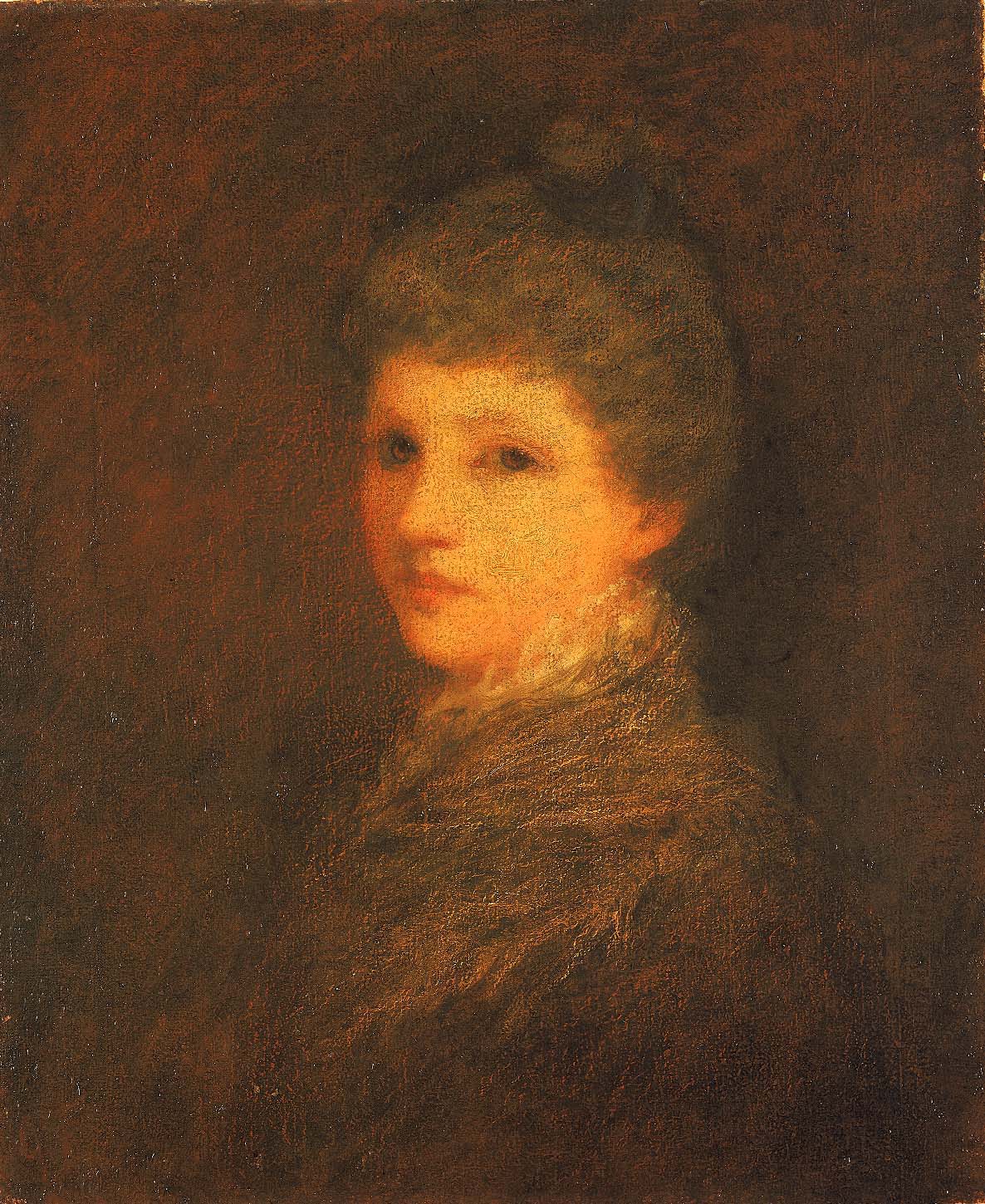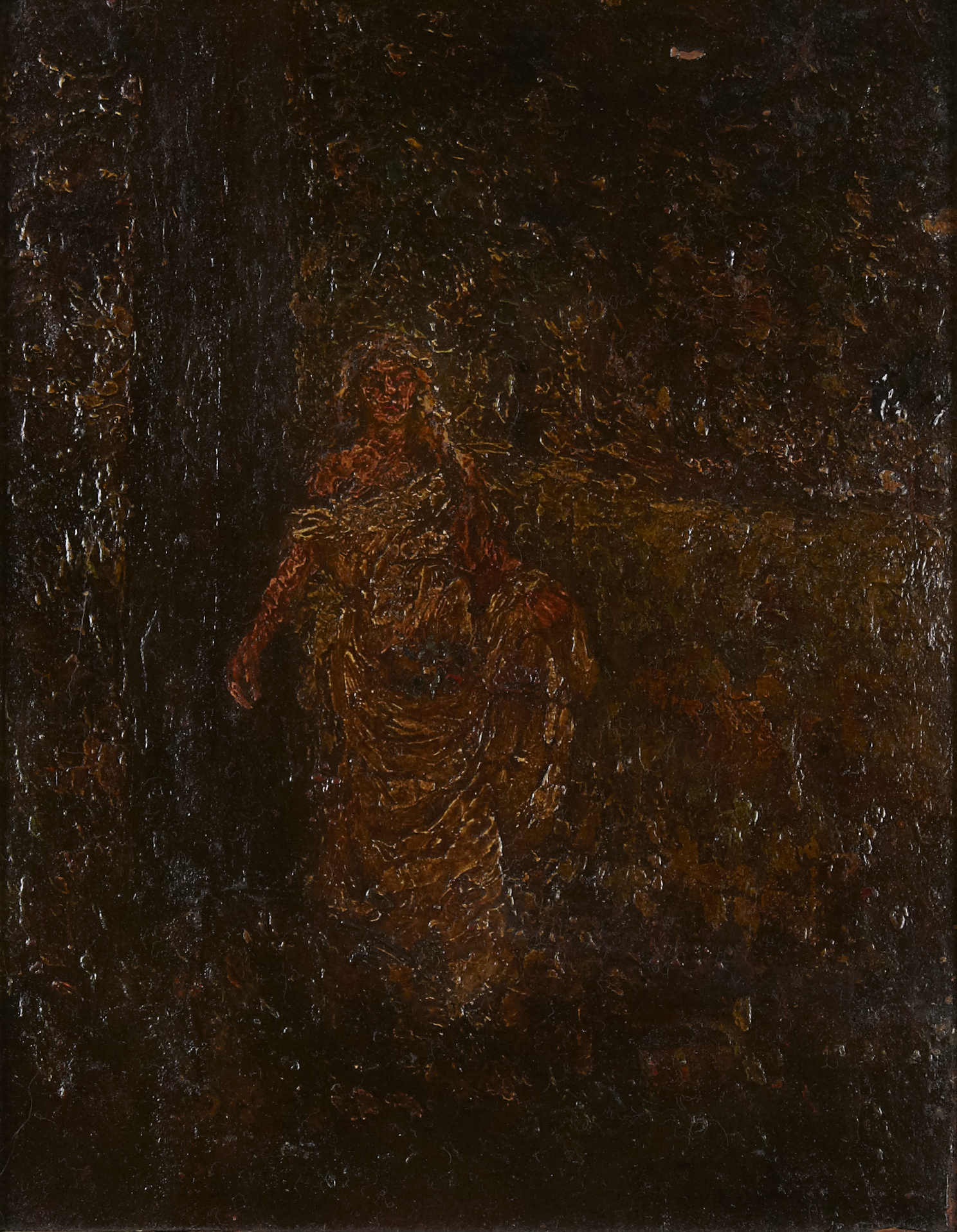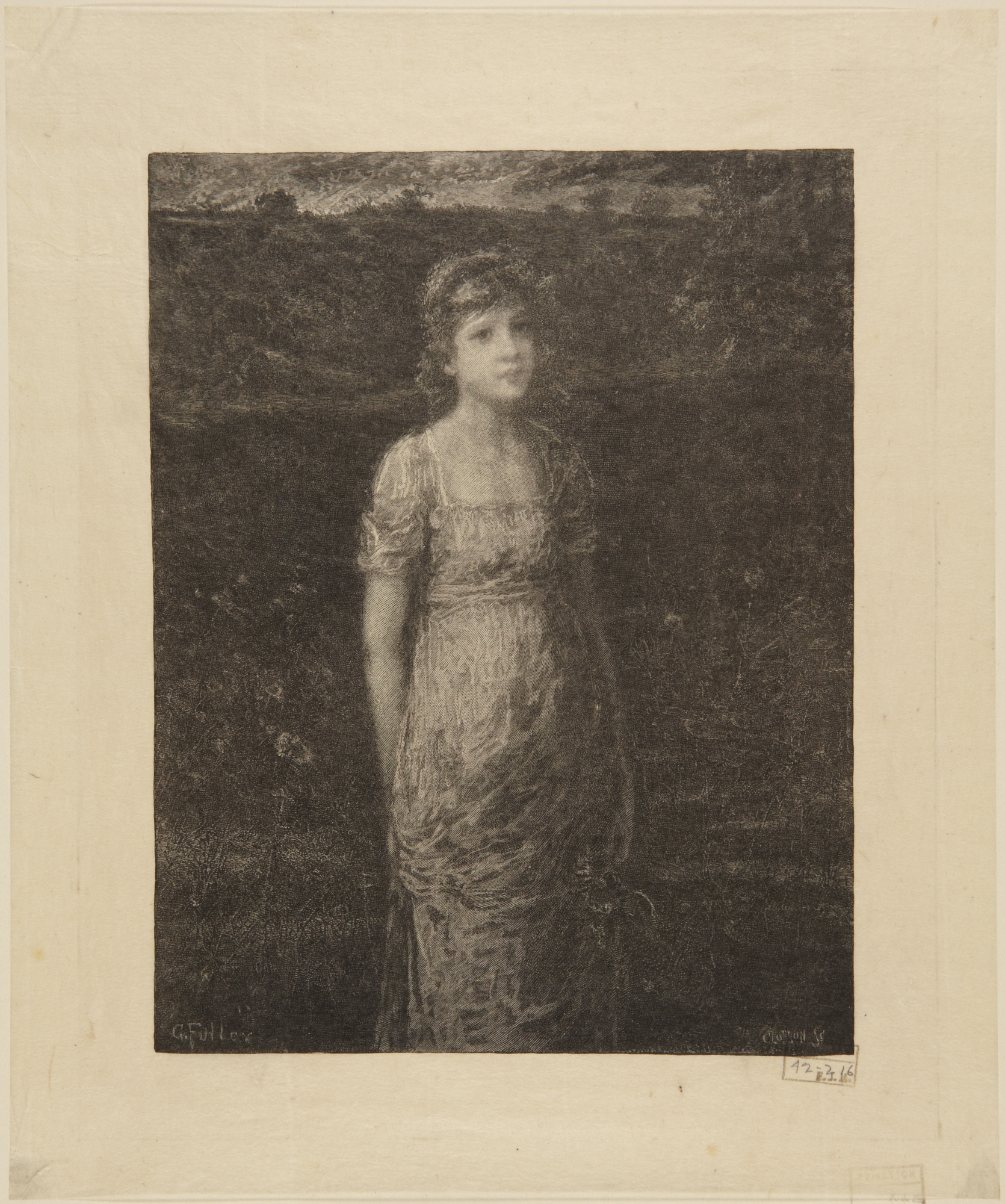George Fuller
George Fuller was brought up on a farm in Deerfield, Massachusetts, and periodically returned to it throughout his life. In 1841 he was an itinerant portraitist with his half brother, Augustus, in northern New York. During the winter of 1841–1842, he studied in Albany, New York, with sculptor Henry Kirke Brown. During the following two winters, he studied at the Boston Artists' Association and shared a studio with sculptor Thomas Ball. Fuller took classes at the National Academy of Design in 1847 after moving to New York City, which—except for one year in Philadelphia and three winters in the South—was to be his home for the next twelve years. After assuming management of the Deerfield farm in 1859 upon the death of his father, Fuller spent five months touring Europe in 1860 to study the old masters and to sketch. For the next fifteen years, he devoted himself largely to farming, but in the spring of 1876, economic necessity and the "discovery" of a new style and technique brought Fuller back to Boston again, and he exhibited there to considerable acclaim during the remaining eight years of his life.
Fuller's trip abroad in 1860 included a study of a wide spectrum of the old and new in European painting: Millet, the Pre-Raphaelites, Corot, and Rembrandt were among the artists given special attention. The lengthy sojourn on his Deerfield farm that followed this trip allowed Fuller's discoveries to mellow in his mind until he had slowly developed a mode of vision that was particularly his own. Eastern America's gowing taste for the sweet, sad look of American's tone poets undoubtedly contributed to the somewhat exaggerated acclaim accorded Fuller during his final years. The anonymous maiden of The Afterglow [The Phillips Collection] and the unassuming youngster in Dandelion Girl, [Museum of Fine Arts, Boston] typical subjects of Fuller's late style, dwell more within an aura than a real space and are bathed in a dim but highly varnished glow. The mood evoked is one that, in James Flexner's words, "luxuriates in not being forced to accept from the senses any data that does not serve its immediate imaginative ends." Not surprisingly Fuller was a great favorite of the New England literati and his wistful sense of nostalgia was often compared to that of Corot, an artist with whom he had little else in common.
Peter Bermingham American Art in the Barbizon Mood (Washington, D.C.: National Collection of Fine Arts and Smithsonian Institution Press, 1975)
